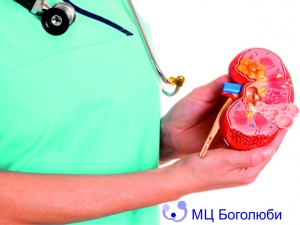Coral stones are complications of urolithiasis, which are considered one of the most dangerous kidney formations. These stones can reach quite large sizes, and they cannot always be cured by conservative methods. According to statistics, women of reproductive age are most often faced with coral-like formations.
Stages of stone growth
The process of formation of coral-like concretions takes a long time. There are four stages of growth, depending on which the stone occupies a certain location in the kidney.
The first stage: the stone is small, located in the renal pelvis and one calyx . The second stage: the "horns" of formations can occupy several calyces, the stone spreads to the extrarenal ball. The third stage: the ballia is occupied by a calculus, the processes reach all the cups of the kidney. The fourth stage: a large coral-shaped stone completely fills the entire renal system, deforming the organ. (At this stage of the disease, the stone has to be removed together with the kidney.)
Why are coral-like stones formed?
There is no single reason for the formation of a coral-like stone, but the leading role here belongs to the violation of mineral and protein metabolism. This is a complex physico-chemical process that is influenced by a number of factors, including: genetic predisposition, insufficient drinking regime, abuse of salty foods and alcohol, infectious and tumor diseases of the urogenital tract, hyperfunction of the parathyroid gland, spinal injuries, osteoporosis, abnormalities of the structure of the urinary organs.
What are the signs?
The main danger of coral-like concretions is that the patient may not be aware of the existence of stones of this type, since urolithiasis in the first stages is almost asymptomatic .
The initial symptoms of stone formation are perceived by most patients as a general malaise. The first signs to look out for are:
• headache;
• weakness;
• chills;
• dry mouth
The second stage of stone growth is already indicated by pain in the lower back. The pain syndrome is not pronounced, usually does not require the use of painkillers. Urine density and color change.
In the third stage, due to the growth of calculi, the kidney parenchyma is damaged, blood is combined with urine, which becomes cloudy and acquires a pink color.
The fourth stage is characterized by difficulty urinating due to the kidney space blocked by stones, the pain in the lower back becomes very intense.
What shall I do?
The first step is to consult a urologist. If, after diagnosis, it turns out that the coral-like concretion is formed by uric acid salts, the doctor will prescribe conservative therapy. In this case, the stone is subject to dissolution with the use of certain medications. In 2-3 months of therapy, the stone can be completely removed from the kidney. If the coral-like concretion has a different composition, then there will be no effect, and it makes sense to resort to lithotripsy - crushing with ultrasonic waves.
In severe cases, specialists of the " Bogolyuba " MC use surgical methods to remove coral-like concretions.
How to prevent?
Treatment of coral-like stones is always accompanied by the appointment of a diet, it is also an important measure of disease prevention. It is necessary to drink at least two liters of water per day. Exclude foods that stimulate increased secretion of gastric juice: spicy, salty, spicy foods, carbonated drinks and coffee, as well as foods with a high calcium content (fermented milk foods).
You should eat small meals, 4-5 times a day, in small portions, making a menu of acceptable foods. Among folk remedies, pumpkin juice and a decoction of bean inflorescences have useful properties. Proper nutrition should be combined with physical exercises and water procedures.

















